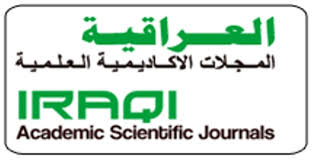Formal indications in the trademark (Arab institutions as a model)
DOI:
https://doi.org/10.59767/2023.8/26.3Keywords:
semantics, brand, form, institutionsAbstract
emantics and ways to employ them in the brand have made a big difference in the field of visual art in general since ancient times, I mean since the first practices of ancient man on the walls of caves, he was satisfied with encoding things and writing them down from his daily observations, so they seemed simple and spontaneous, from here symbolic signs and signs were formed and became a semantic meaning and a functional purpose in his life. Art had the largest share through the employment and borrowing of these forms in contemporary works of art, no matter how distinctive the work of art is, we find its root and basis based on the forms provided by nature, we see its clear impact on the brand and what is borrowed to form a clear visual discourse with a beautiful vision with a functional dimension according to a system governed by artistic formats that are characterized by an academic formulation of the brand of Arab institutions.
Results of the article : -
1- Man, especially the artist and designer, has borrowed and employed all the natural, industrial and harmonic symbols surrounding him in most of his daily life.
2- The symbol is no longer only for cognitive communication, but it had another function, which is deliberative through commodification, an identity associated with the product and private ownership .
References
Abdullah, I. H. (2008). Design art, philosophy, theory, practice (Vol. C2). Sharjah: Department of Culture and Information.
Ahmed, A. G. (2020, 3 10). Stages of evolution of the BMW logo. (Abu Dhabi) Retrieved from Al Ain News: https://al-ain.com/article/histoire-logo-bmw-legende
Al-Habasha, S. (2004). Pictures of meaning between Austin and Al-Jurjani. Horizon magazine.
Ali, A. (1996). Body blades, the dialectic of presence and absence in the theater. Jordan: Azman for publication and distribution.
Al-Khalil, M. A. (2023, 4 18). Why did the crescent become an Islamic symbol. Retrieved from Syria TV: https://www.syria.tv/%D9%84%D9%85%D8%A7%D8%B0%D8%A7-%D8%A3%D9%85%D8%B3%D9%89-%D8%A7%D9%84%D9%87%D9%84%D8%A7%D9%84-%D8%B4%D8%B9%D8%A7%D8%B1%D8%A7%D9%8B-%D8%A5%D8%B3%D9%84%D8%A7%D9%85%D9%8A%D8%A7%D9%8B%D8%9F
Al-Zaidi, J. A.-K. (2008). Rhythm structure in linear formations (Vol. I2). Iraq: General Cultural Affairs House.
Borrowing and Employing Technical Coverages in Science A study in the relationship of modern painting with digital screensBasra Arts Journal209
Coca-Cola logo design. (2023, 4 16). Retrieved from NAB Advertising: https://www.nabadv.com/en/
Compound, A. L. (1989). dictionary, The brief. Egypt: Dar Tahrir for printing and publishing.
denotation meaning. (2023, 4 12). Retrieved from Meanings / Each drawing has a meaning: https://www.almaany.com/ar/dict/ar-ar/%D8%AF%D9%84%D8%A7%D9%84%D8%A9/
Fouad, A. A., & Majeed, B. A. (2023). Conceptual art and its role in awareness campaigns. Basrah Arts Journal(25), pp. 37-44. doi:https://doi.org/10.59767/bfj.5300.1983
Hattab, M. (2020, 4 1). Hidden secrets discovered in the world's most famous logos. Retrieved from Abu Nawaf Network: https://translate.google.iq/?hl=ar&tab=wT&sl=ar&tl=en&text=%D9%85%D8%AD%D9%85%D8%AF%20%D8%AD%D8%B7%D8%A7%D8%A8%0A%20%D8%B4%D8%A8%D9%83%D8%A9%20%D8%A3%D8%A8%D9%88%20%D9%86%D9%88%D8%A7%D9%81%0A%20%D8%A3%D8%B3%D8%B1%D8%A7%D8%B1%20%D9%85%D8%AE%D9%81%D9%8A%D8%
Ibrahim, H. O. (2023, 4 12). Formalism. Retrieved from Lexicon: https://www.almougem.com/search.php?query=%D8%A7%D9%84%D8%B4%D9%83%D9%84
Ibrahim, Z. (1966). Philosophy of Art in Contemporary Thought. Cairo: Egypt Publishing House.
Interpretation semiotics production and the logic of evidence2006MoroccoArab Cultural Center
Iray, D. (2017). Logo Design Love (Guide to Creating Unique Brand Identities). northern Ireland: The Yemeni Society for Arts.
Ismail, B. K. (1985). Civilization of Iraq (Vol. C1). Iraq: Iraqi Ministry of Culture.
Jenzy, H. T. (2022). narrative functions in Renaissance paintings. Basrah Arts Journal(22). doi:https://doi.org/10.59767/bfj.5300.1977
Kotler, P. (1999). principles-of marketing (Vol. 8). New Jersey, USA: Upper Saddle River.
Logo and flag
Majeed, B. A. (2018). The effectiveness of Mesopotamian arts symbols and the mechanism of their exploitation in contemporary Iraqi sculpture. Basra Arts Journal, p. 209.
Majeed, H. A., & Hussain, M. A. (2023). Sculptural proposals for the logos of the faculties of Iraqi Universities - an applied study. Basrah Arts Journal(25), pp. 111-118. doi:https://doi.org/10.59767/bfj.5300.1989
Matar, A. H. (without date). Beauty philosophy. Cairo: Dar Al-Maarif.
Matar, A. H. (without date). Beauty philosophy. Cairo: Knowledge House.
Najmuddin, R. (2021). Made in Design: Doors in Design Hallway (Vol. I1). Iraq: Dar Score for publication and distribution.
Najmuddin, R. (2021). Made in Design: Doors in Design Hallway (Vol. I1). Iraq: Dar Score for publication and distribution.
Newton, E. (1967). The Meaning of Beauty. USA: Penguin Books.
notitheas, T. (2020, 7 25). pictography. Retrieved from N post: https://www.noonpost.com/content/37717
Rayan, M. A. (1989). Philosophy of Beauty and the emergence of fine arts. Alexandria: University Knowledge House.
Schulz, R. (1994). Semiotics and hermeneutics (Vol. 1). (S. Al-Ghanimi, Trans.) Beirut: Arab Foundation for Studies and Publishing.
Sherine, A. (2021, june 4). Figure in the plastic arts. Retrieved from https://www.brooonzyah.net/defining-form-in-the-plastic-arts/
The science of signs. (2023, 4 14). Retrieved from Wikipedia: https://ar.wikipedia.org/wiki/%D8%B9%D9%84%D9%85_%D8%A7%D9%84%D8%B9%D9%84%D8%A7%D9%85%D8%A7%D8%AA#cite_note-6
Wahba, M. (2007). Philosophical Lexicon. Cairo: Dar Quba Modern for printing, publishing and distribution.
Yassin, A. N. (2006). Religious symbolism in Islamic decoration. Cairo: Zahraa Al-Sharq Library.
Downloads
Published
How to Cite
License
Copyright (c) 2023 Hashem Zeki Muhammad Ali, Qais Eesa Abdullah (Author)

This work is licensed under a Creative Commons Attribution 4.0 International License.







